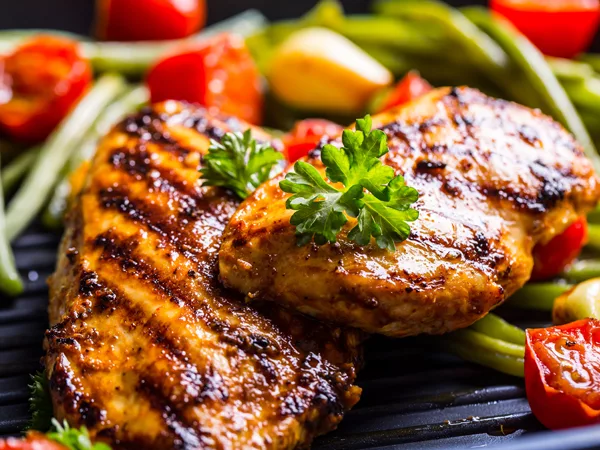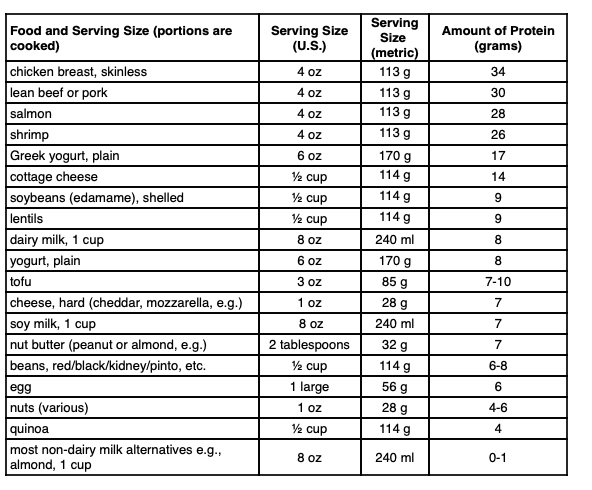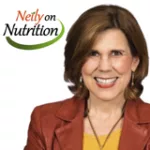Fuel Your Day with Protein

Working as a clinical dietitian on the geriatric floor at Parkland Hospital several decades ago left a lasting impression on me. Many things change as we age, including the gradual loss of muscle. People who were once vibrant and robust may grow frailer as time passes.
The protein we eat breaks down into amino acids, which our body then turns into proteins to support functions such as:
- Growth, repair, maintenance of muscle and other tissue.
- Making hormones and enzymes.
- Transporting molecules.
- Regulating fluid balance.
- Manufacturing antibodies to resist infectious diseases.
- Maintaining acid-base balance.
Like carbs and fats, protein also provides us with energy. However, because of the myriad essential functions outlined above, protein is not our body’s preferred energy source.
Where do we get protein?
Any food product originating from an animal or living being is a source of protein. Red meat, pork, poultry, fish/shellfish, eggs, milk, yogurt, and cheese are all protein sources.
Of course, there are non-animal sources such as dried beans (legumes) and soy. Other plant-based foods like veggies and grains contain protein, but not significant amounts.
Although nuts, seeds, and nut butters (e.g., peanut and almond butter) are classified as protein, they’re also a significant source of fat — an excellent source of healthy fats! — but there are many calories for small portions.
How much protein do we need?
The recommended daily allowance (RDA) needed is 0.36 grams per pound (54 grams per day for a 150-pound person – the equivalent of two 3-ounce chicken breasts*). For very active individuals and athletes the need is greater. Also, research suggests older adults’ benefit from more protein, 0.45 – 0.55 grams per pound (75 grams per day for a 150-pound person), especially when paired with physical activity.
We can only metabolize so much at one time so it’s best to eat protein throughout the day versus getting most protein at one meal. Most health professionals like myself recommend 20 – 30 grams per meal.
* There is a difference between the weight of the protein-containing food and the amount of protein it contains. Ounces and grams are measurements of weight and there are grams of protein in food – yes, it can be confusing!
A 3-ounce chicken breast weighs 85 grams. However, that does not mean the chicken breast contains 85 grams of protein.

What happens if we don’t eat enough protein?
Perhaps you’ve seen a friend or loved one hospitalized for an extended stay. Remember how strong they used to be? Did you notice how “squishy” they got? Due to protein’s many important body functions, including healing the body, we begin to whittle away at the protein in our body — mostly muscle.
Losing muscle mass decreases strength. If we lose too much, our ability to go about our daily living activities diminishes. Protein is vital for the aging process. Why? Lack of protein makes it harder simply to get up and down out of a chair. Just that one action can add years to one’s life.
I have a favor to ask.
If a loved one is in the hospital for a long time or they’re in an extended care facility, encourage them to eat protein first. A cup of soup may be soothing, but it does nothing to meet much-needed protein requirements.
For beneficial protein inspiration, go to https://bit.ly/neilyshighproteinbreakfasts for my 16 High Protein Breakfast Ideas handout. The link is case-sensitive.





